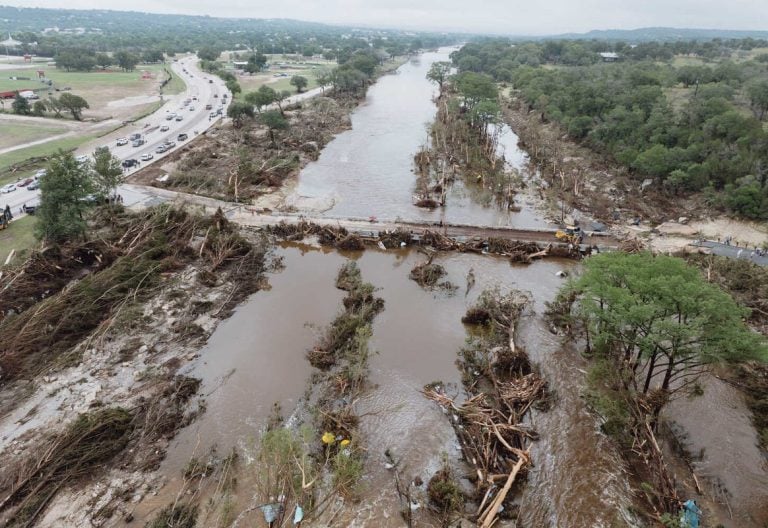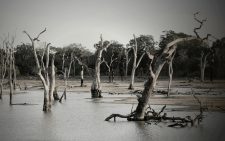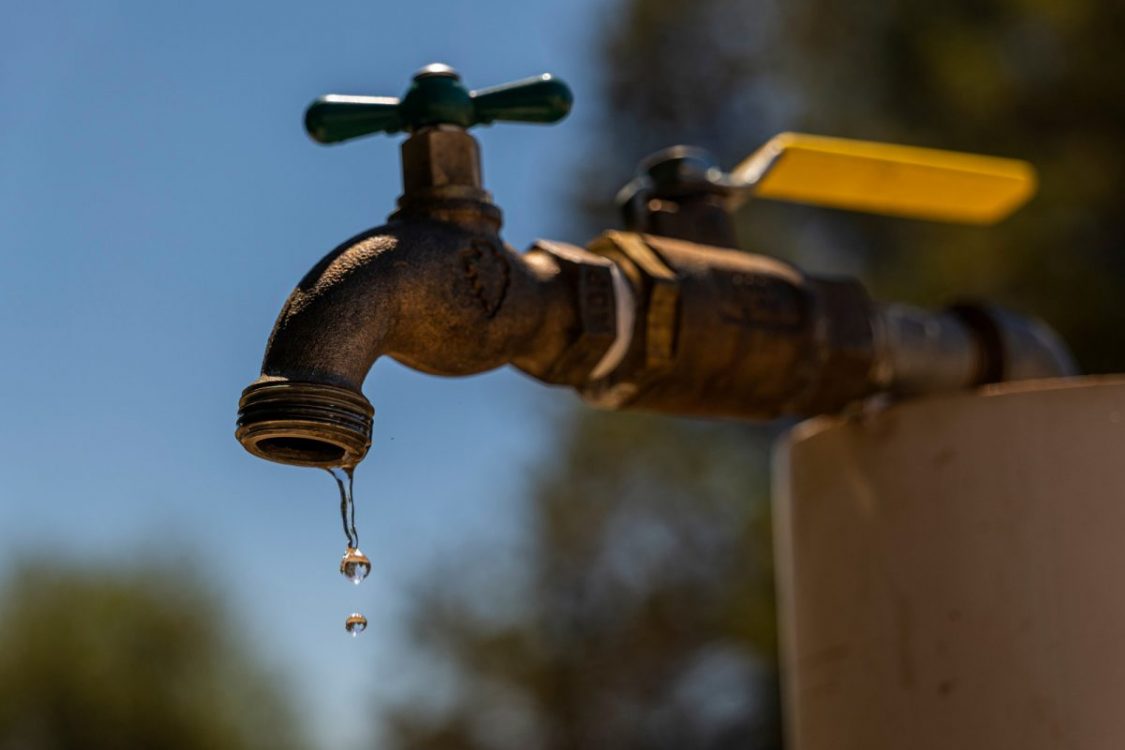51 dead in Texas floods as search for missing grows more dire

Rescuers swarmed the area around the swollen Guadalupe River by air, land and water Saturday in a desperate search for more than two dozen campers and others still missing after intense flooding the day before.
At least 51 people, including 15 children, were killed, officials said. Most of the deaths occurred in Kerr County, an area northwest of San Antonio that has experienced the worst of the flooding, where Sheriff Larry Leitha said that 43 people had died. Elsewhere in the state, four people were killed in Travis County, three in Burnet County and one in Kendall County, authorities said.
Among the dead and missing people were children from Camp Mystic, a popular Christian summer camp for girls, where dramatic efforts by staff and rescuers saved many more campers.
The mother of one girl said in an interview that the campers in her daughter’s cabin had been awakened by thunder early Friday and that they then saw lights outside.
At least one truck was moving from cabin to cabin collecting girls, she said, but by the time it reached her daughter’s cabin, it was full. So counselors led the girls to the recreation hall through ankle-deep water, which was moving fast enough that the girls’ flip-flop straps were breaking and being washed away, said the mother, who declined to give her name.
Multiple groups of girls wound up at the large building, which has a second-floor balcony running around the perimeter. The counselors led the girls in songs and tried to reassure them as the water rose to approximately 10 feet, according to the daughter’s account.
The water eventually receded in the recreation center, but the floor was a mess.
“The people who didn’t have shoes were getting their feet all muddy,” the daughter said, “and, at this point, I was really glad to have my Crocs.”
The girls were flown out by helicopter, then driven to a family reunification site at a nearby elementary school to reunite with their parents.
Rep. August Pfluger, a Republican whose district includes a portion of the flooded region, said on social media that two of his three daughters, Caroline and Juliana, had been evacuated from Camp Mystic.
Some names of children who did not survive have begun to emerge. One is Sarah Marsh, an 8-year-old from Mountain Brook, Alabama, a suburb of Birmingham.
“We will always feel blessed to have had this beautiful spunky ray of light in our lives,” a grandmother, Debbie Ford Marsh, wrote on Facebook.
Another of the victims was Janie Hunt, 9, of Dallas, her grandmother Margaret Hunt said in an interview. Janie, a great-granddaughter of oil baron William Herbert Hunt, attended the camp with six cousins who survived.
The family of another camper who died relayed the news on a local Facebook page.
“We are thankful she was with her friends and having the time of her life,” the message said. “She will forever be living her best life at Camp Mystic.”
Some adult victims have also been identified. One is Jane Ragsdale, the director and a co-owner of the Heart O’ the Hills summer camp, which had no campers at the time of the flooding.
Bobby Martin, 46, and his wife, Amanda, 44, were also among the dead, said Martin’s father, John Keith Martin.
The couple, who were from Odessa, Texas, were camping by the Guadalupe River when their recreational vehicle was swept away. The elder Martin said that one of his grandchildren, as well as that grandchild’s girlfriend, had been with the couple and were still missing.
“He was an adventurous man, adventurous and outgoing,” Martin said of his son. “He had many good friends, because he was a good friend.”
Julian Ryan, 27, was stuck in his trailer with other members of his family when the rising waters prevented them from opening the door. In a panic, Ryan punched through the bedroom window and the glass cut his arm, causing him to bleed heavily, his fiancee, Christinia Wilson, and mother, Marilyn Ryan, said in a phone interview. By then, the water was up to their necks.
They called 911 again and again, but no one came, both women said.
“By that time, he had lost so much blood and knew he wasn’t going to make it,” Wilson said. “He said, ‘I love you. I’m so sorry.’ In minutes, he was gone.”
In an age of advanced forecasting and cellphones that can spread emergency alerts quickly and widely, it is difficult to contemplate how so many people were swept away.
But a timeline of how the storm developed shows how it caught residents and officials unprepared.
Early Thursday afternoon, the National Weather Service issued a broad flood watch for parts of the Texas Hill Country, including Kerr County, warning that a slow-moving storm system was expected to bring anything from scattered showers to intense storms through Friday morning.
Such watch notices are common, and they are often followed by a warning when a dangerous event is occurring or about to occur.
Locally heavy rainfall could cause flash flooding, the forecast said, with rainfall amounts of 5 to 7 inches possible.
But extreme, localized bursts of rain are often hard to predict. In some counties, the rainfall exceeded the forecast by several inches. Up to 15 inches, or several months’ worth of rain, fell in isolated spots directly over the river plain.
Early Friday, with most residents and campers still asleep, the weather service issued warnings for flash floods as the storm’s effects were becoming clearer.
A little after 4 a.m., the weather service sent one of its most urgent alerts, a “particularly dangerous situation” warning, reserved for the most urgent and potentially deadly scenarios. The warnings are often shared on the weather service’s social media accounts and broadcast by local news organizations.
At 5:34 a.m., a “particularly dangerous situation” warning came for Kerr County: “Residents and campers should SEEK HIGHER GROUND NOW! Life threatening flash flooding along the river is expected.”
It was not clear how many people along the river, a popular summer destination for camping, kayaking and tubing, had received the alerts. Some cellphones receive alerts if the owner has that capability turned on. One local resident recalled being awakened by an alert around 2 a.m., but since such alerts are common, she went back to sleep.
Soon, reports emerged from gauges along the Guadalupe, which rose at an alarming rate from 7 feet at midnight in Hunt to over 29 feet at 4 a.m., the second-highest level ever, according to the National Oceanic and Atmospheric Administration.
Officials on the ground were caught unprepared. “The amount of rain that fell was never in any of those forecasts,” W. Nim Kidd, the chief of the Texas Department of Emergency Management, said at a news conference Friday night.
The officials were then left with difficult choices.
The Hill Country, which has lured many visitors with its natural splendor and rustic vibe, has also become known as “flash flood alley.” A propensity for high levels of rainfall, combined with thin soil, exposed bedrock and steep terrain, makes it especially vulnerable.
Evacuating large numbers of people in the middle of the night could have created more problems, given the many low-lying roads, which could easily become flooded and dangerous for driving, said Dalton Rice, the city manager of Kerrville.
“You could go into a mass panic, get people on the road, which could be even more deadly by having vehicles swept away,” he said.
For camps along the river, he said, flood warnings called for campers to get to high ground and wait for rescuers to arrive.
All around the flooded area, search-and-rescue teams from many agencies sprang into action. As of Saturday afternoon, 850 people had been rescued, hundreds of them by helicopter. One woman was rescued from a tree about 20 miles downriver from where she had been camping.
Helicopter crews continued to fly over the river Saturday looking for stranded survivors, though officials acknowledged the likelihood of finding any was diminishing.
“Our hope and prayer is that there are still people alive that are out there,” Kidd said, “and we are actively searching for them.”















